Micro Aspheric Convex Lenses Fabricated by Precise Scraping
Abstract
:1. Introduction
2. Materials and Methods
3. Results
4. Discussion
5. Conclusions
Author Contributions
Funding
Institutional Review Board Statement
Informed Consent Statement
Data Availability Statement
Acknowledgments
Conflicts of Interest
Appendix A
References
- Weck, M. Ultraprecision Machining of Microcomponents. In Proceedings of the International Seminar on Precision Engineering and Micro Technology, Aachen, Germany, 19–20 July 2000; pp. 113–122. [Google Scholar]
- Croutxé-Barghorn, C.; Soppera, O.; Lougnot, D.J. Fabrication of Microlenses by Direct Photo-Induced Crosslinking Polymerization. Appl. Surf. Sci. 2000, 168, 89–91. [Google Scholar] [CrossRef]
- Wu, M.; Hsiao, S.-Y.; Peng, C.-Y.; Fang, W. Development of tracking and focusing micro actuators for dual-stage of optical pick-up head. J. Opt. A Pure Appl. Opt. 2006, 8, s323–s329. [Google Scholar] [CrossRef]
- Jeon, C.W.; Gu, E.; Liu, C.; Girkin, J.M.; Dawson, M.D. Polymer microlens arrays applicable to AlInGaN ultraviolet micro-light-emitting diodes. IEEE Photon. Technol. Lett. 2005, 17, 1887–1889. [Google Scholar] [CrossRef]
- Park, E.-H.; Kim, M.-J.; Kwon, Y.-S. Microlens for efficient coupling between LED and optical fiber. IEEE Photon. Technol. Lett. 1999, 11, 439–441. [Google Scholar] [CrossRef]
- Fan, Y.-T.; Peng, C.-S.; Chu, C.-Y. Advanced microlens and color filter process technology for the high-efficiency CMOS and CCD image sensors. Proc. SPIE 2000, 4115, 263–274. [Google Scholar]
- Jain, A.; Xie, H. Microendoscopic confocal imaging probe based on an LVD microlens scanner. IEEE J. Sel. Top. Quantum Electron. 2007, 13, 228–234. [Google Scholar] [CrossRef]
- Tohara, M.; Iwase, E.; Hoshino, K.; Matsumoto, K.; Shimoyama, I. Pop-up display with 3-dimensional microlens structures. In Proceedings of the 18th IEEE International Conference on Micro Electro Mechanical Systems, Miami Beach, FL, USA, 30 January–3 February 2005; pp. 231–234. [Google Scholar]
- Borrelli, N.F. Efficiency of microlens arrays for projection LCD. In Proceedings of the 44th Electronic Components and Technology Conference, Washington, DC, USA, 1–4 May 1994; pp. 338–345. [Google Scholar]
- Bargiel, S.; Lullin, J.; Lemoal, P.; Perrin, S.; Passilly, N.; Albero, J.; Froehly, L.; Lardet-Vieudrin, F.; Gorecki, C. Vertical comb-drive microscanner with 4 × 4 array of micromirrors for phase-shifting Mirau microinterferometry. In Proceedings of the SPIE 9890, Optical Micro- and Nanometrology VI, Brussels, Belgium, 6 April 2016; p. 98900D. [Google Scholar] [CrossRef]
- Jovic, A.; Uto, T.; Hei, K.; Sancho, J.; Sanchez, N.; Zinoviev, K.; Rubio, J.L.; Margallo, E.; Pandraud, G.; Sarro, P.M. A highly miniturized single-chip MOEMS scanner for all-in-one imaging solution. In Proceedings of the 2018 IEEE Micro Electro Mechanical Systems (MEMS), Belfast, UK, 21–25 January 2018; pp. 25–28. [Google Scholar] [CrossRef]
- Kwon, S.; Lee, L.P. Stacked two dimensional micro-lens scanner for micro confocal imaging array. In Proceedings of the 15th IEEE International Conference on Micro Electro Mechanical Systems, Las Vegas, NV, USA, 24 January 2002; pp. 20–24. [Google Scholar]
- Jovic, A.; Losilla, N.S.; Dura, J.S.; Zinoviev, K.; Guivernau, J.L.R.; Margallo-Balbas, E.; Mastrangeli, M.; Pandraud, G.; Sarro, P.M. Self-aligned micro-optic integrated photonic platform. Appl. Opt. 2020, 59, 180–189. [Google Scholar] [CrossRef]
- Bardinal, V.; Camps, T.; Reig, B.; Abada, S.; Daran, E.; Doucet, J.B. Advances in polymer-based optical MEMS fabrication for VCSEL beam shaping. IEEE J. Sel. Top. Quant. 2015, 21, 2700308. [Google Scholar] [CrossRef]
- Raguin, D.H.; Gretton, G.; Mauer, D.; Piscani, E.; Prince, E.; Sales, T.R.M.; Schertler, D. Anamorphic and aspheric microlenses and microlens arrays for telecommunication and applications. In Proceedings of the Optical Fiber Communication (OFC) Conference, Anaheim, CA, USA, 17–22 March 2001; pp. MK1-1–MK1-3. [Google Scholar]
- Wu, M.C.; Lin, L.Y.; Lee, S.S.; Pister, K.S.J. Micromachined free-space integrated micro-optics. Sens. Actuators A Phys. 1995, 50, 127–134. [Google Scholar] [CrossRef]
- Hung, K.Y.; Chen, C.W.; Tseng, F.G.; Chou, H.P.; Chieng, C.C. Self-reshapable and ophiocoma-like micro optical array for protein micro array detection in parallel. In Proceedings of the Conference of Micro TAS, Malmo, Sweden, 26–30 September 2004; pp. 479–481. [Google Scholar]
- Chou, H.Y.; Chang, S.B.; Lin, F.; Yang, C.R.; Lou, R.; Kuo, W.K.; Chen, C.J.; Huang, W.H. Rapid 3D microstructure fabrication by using excimer laser micromachining with image processing technologies. In Proceedings of the ASPE Annual Meeting, St. Louis, MO, USA, 25–30 October 1998; pp. 189–192. [Google Scholar]
- Popovic, Z.D.; Sprague, R.A.; Connell, G.A.N. Technique for monolithic fabrication of microlens arrays. Appl. Opt. 1988, 27, 1281–1284. [Google Scholar] [CrossRef]
- Cox, W.R.; Chen, T.; Hayes, D.J.; MacFarlane, D.L.; Narayan, V.; Tatum, J.A. Microjet fabrication of microlens arrays. In Proceedings of the Conference Proceedings, Boston, MA, USA, 31 October–3 November 1994; LEOS ’94. IEEE: Boston, MA, USA, 1994; pp. 52–53. [Google Scholar]
- Pan, C.T.; Chien, V.; Hsieh, C.C. Technique of microball lens formation for efficient optical coupling. Appl. Opt. 2004, 43, 5939–5946. [Google Scholar] [CrossRef] [PubMed]
- Wang, S.; Liang, W.; Dong, Z.; Lee, V.G.B.; Li, W.J. Fabrication of micrometer- and nanometer-scale polymer structures by visible light induced dielectrophoresis (DEP) force. Micromachines 2011, 2, 431–442. [Google Scholar] [CrossRef] [Green Version]
- Jovic, A.; Pandraud, G.; Zinoviev, K.; Rubio, J.L.; Margallo, E.; Sarro, P.M. Fabrication process of Si microlenses for OCT systems. In Proceedings of the SPIE 9888, Micro-Optics, Brussels, Belgium, 4–5 April 2016; p. 98880C. [Google Scholar] [CrossRef]
- Passilly, N.; Perrin, S.; Albero, J.; Krauter, J.; Gaiffe, O.; Gauthier-Manuel, L.; Froehly, L.; Lullin, J.; Bargiel, S.; Osten, W.; et al. Wafer-level fabrication of arrays of glass lens doublets. In Proceedings of the SPIE 9888, Micro-Optics, Brussels, Belgium, 4–5 April 2016; p. 98880T. [Google Scholar] [CrossRef]
- Huang, S.; Li, M.; Shen, L.; Qiu, J.; Zhou, Y. Fabrication of high quality aspheric microlens array by dose-modulated lithography and surface thermal reflow. Opt. Laser Technol. 2018, 100, 298–303. [Google Scholar] [CrossRef]
- Llombart, N.; Lee, C.; Alonso-delPino, M.; Chattopadhyay, G.; Jung-Kubiak, C.; Jofre, L.; Mehdi, I. Silicon micromachined lens antenna for THz integrated heterodyne arrays. IEEE Trans. Terahertz Sci. Technol. 2013, 3, 515–523. [Google Scholar] [CrossRef]
- Logean, E.; Hvozdara, L.; Di-Francesco, J.; Peter Herzig, H.; Voelkel, R.; Eisner, M.; Baroni, P.-Y.; Rochat, M.; Müller, A. High numerical aperture silicon collimating lens for mid-infrared quantum cascade lasers manufactured using wafer-level techniques. In Proceedings of the SPIE 8550, Optical Systems Design, Barcelona, Spain, 18 December 2012; p. 85500Q. [Google Scholar] [CrossRef] [Green Version]
- Qiu, J.; Li, M.; Zhu, J.; Ji, C. Fabrication of microlens array with well-defined shape by spatially constrained thermal reflow. J. Micromech. Microeng. 2018, 28, 085015. [Google Scholar] [CrossRef]
- Nakamura, M.; Mano, I.; Taniguchi, J. Fabrication of micro-lens array with antireflection structure. Microelectron. Eng. 2019, 211, 29–36. [Google Scholar] [CrossRef]
- Lee, G.J.; Kim, H.M.; Song, Y.M. Design and fabrication of microscale, thin-film silicon solid immersion lenses for mid-infrared application. Micromachines 2020, 11, 250. [Google Scholar] [CrossRef] [Green Version]
- Lin, M.J.; Wen, C.H. Microlens array fabrication by using a microshaper. Micromachines 2021, 12, 244. [Google Scholar] [CrossRef]
- Hsieh, W.H.; Chen, J.H. Lens-Profile Control by electrowetting fabrication technique. IEEE Photon. Technol. Lett. 2005, 17, 606–608. [Google Scholar] [CrossRef]
- Cheng, C.C.; Yeh, J.A. Dielectrically actuated liquid lens. Opt. Express 2007, 15, 7140–7145. [Google Scholar] [CrossRef]
- Nguyen, B.K.; Iwase, E.; Matsumoto, K.; Shimoyama, I. Electrically driven varifocal micro lens fabricated by depositing parylene directly on liquid. In Proceedings of the IEEE MEMS 2007, Kobe, Japan, 21–25 January 2007; pp. 305–308. [Google Scholar]
- Vallet, M.; Berge, B.; Volvelle, I. Electrowetting of water and aqueous solutions on poly (ethylene terephthalate) insulating films. Polymer 1996, 37, 2465–2470. [Google Scholar] [CrossRef]
- Ren, H.; Xianyu, H.; Xu, S.; Wu, S.T. Adaptive dielectric liquid lens. Opt. Express 2008, 16, 14954–14960. [Google Scholar] [CrossRef] [PubMed]
- Xu, S.; Lin, Y.J.; Wu, S.T. Dielectric liquid microlens with well-shaped electrode. Opt. Express 2009, 17, 10499–10505. [Google Scholar] [CrossRef] [PubMed]
- Kuo, S.M.; Lin, C.H. Non-spherical SU-8 microlens array fabricated utilizing a novel stamping process and an electro-static pulling method. In Proceedings of the IEEE MEMS 2009, Sorrento, Italy, 25–29 January 2009; pp. 987–990. [Google Scholar]
- Hong, K.S.; Wang, J.; Sharonov, A.; Chandra, D.; Aizenberg, J.; Yang, S. Tunable microfluidic optical devices with an integrated microlens array. J. Micromech. Microeng. 2006, 16, 1660–1666. [Google Scholar] [CrossRef] [Green Version]
- Hung, K.Y.; Chen, Y.K.; Huang, S.H.; Shye, D.C. Molding and hot forming techniques for fabricating plastic aspheric lenses with high blue-light transmittance. Microsyst. Technol. 2009, 16, 1439–1444. [Google Scholar] [CrossRef]
- Chronis, N.; Liu, G.L.; Jeong, K.H.; Lee, L.P. Tunable liquid-filled microlens array integrated with microfluidic network. Opt. Express 2003, 11, 2370–2378. [Google Scholar] [CrossRef]
- Hung, K.Y.; Fan, C.C.; Tseng, F.G.; Chen, Y.K. Design and fabrication of a copolymer aspheric bi-convex lens utilizing thermal energy and electrostatic force in a dynamic fluidic. Optics Express 2010, 18, 6014–6023. [Google Scholar] [CrossRef]
- Hung, K.Y.; Chang, L.W.; Tseng, F.G.; Chiou, J.C.; Chiu, Y. Optimum electrostatic force control for fabricating a hybrid UV-curable aspheric lens. J. Micromech. Microeng. 2010, 20, 075001. [Google Scholar] [CrossRef]
- Hung, K.Y.; Tseng, F.G.; Liao, T.H. Electrostatic-force-modulated microaspherical lens for optical pickup head. J. Microelectromech. Syst. 2008, 17, 370–380. [Google Scholar] [CrossRef]
- Kota, K.; Oshima, M.; Maruyama, H. The DDI-CNC for Machining Sculptured surface. In Proceedings of the IEEE Conference on IECON, Tokyo, Japan, 22–26 October 1984; pp. 551–555. [Google Scholar]
- Lin, R.S.; Koren, Y. Efficient Tool-Path Planning for Machining Free-Form Surfaces. J. Eng. Ind.-T. ASME 1996, 118, 20–28. [Google Scholar] [CrossRef]
- Lo, C.C. A New Approach to CNC Tool Path Generation. Comput. Aided Des. 1998, 30, 649–655. [Google Scholar]
- Huang, Y.; Oliver, J.H. Non-Constant Parameter NC Tool Path Generation on Sculptured Surfaces. Int. J. Adv. Manuf. Technol. 1994, 9, 281–290. [Google Scholar] [CrossRef]
- Chen, Y.D.; Ni, J.; Wu, S.M. Real-Time CNC Tool Path Generation for Machining IGES Surfaces. J. Eng. Ind.-T. ASME 1993, 115, 480–486. [Google Scholar] [CrossRef]
- Rao, N.; Ismail, F.; Bedi, S. Tool Path Planning for Five-Axis Machining Using the Principle Axis Method. Int. J. Mach. Tool Manu. 1997, 37, 1025–1040. [Google Scholar] [CrossRef]
- Loney, G.C.; Ozsoy, T.M. NC Machining of Free Form Surfaces. Comput. Aided Des. 1987, 19, 85–90. [Google Scholar] [CrossRef]
- Vickers, G.W.; Quan, K.W. Ball-Mills Versus End-Mills for Curved Surfaces. J. Eng. Ind.-T. ASME 1989, 111, 22–26. [Google Scholar] [CrossRef]
- Suresh, K.; Yang, D.C.H. Constant Scallop-Height Machining of Free-Form Surfaces. J. Eng. Ind.-T. ASME 1994, 116, 253–259. [Google Scholar] [CrossRef]
- Elber, G.; Cohen, E. Toolpath Generation for freeform Surface Models. Comput. Aided Des. 1994, 26, 490–496. [Google Scholar] [CrossRef]
- Baptista, R.; Antune Simoes, J.F. Three and five axes milling of sculptured surfaces. J. Mater. Process Technol. 2000, 103, 398–403. [Google Scholar] [CrossRef]
- Lo, C.C.; Lin, R.S. An improved method for scheduling the tool paths for three-axis surface machining. Int. J. Mach. Tool Manu. 2001, 41, 133–147. [Google Scholar] [CrossRef]
- Broomhead, P.; Edkins, M. Generating NC Data at Machine Tool for the Manufacture of Free-Form Surfaces. Int. J. Prod. Res. 2007, 24, 1–14. [Google Scholar] [CrossRef]
- Nian, C.Y.; Yang, W.H.; Tarng, Y.S. Optimization of Turning Operations with Multiple Performance Characteristics. J. Mater. Process Technol. 1999, 95, 90–96. [Google Scholar] [CrossRef]
- Liu, K.; Li, X.P.; Rahman, M.; Liu, X.D. CBN tool wear in ductile cutting of tungsten carbide. Wear 2003, 255, 1344–1351. [Google Scholar] [CrossRef]
- Liu, K.; Li, X.P. Ductile cutting of tungsten carbide. J. Mater. Process. Technol. 2001, 113, 348–354. [Google Scholar] [CrossRef]
- Obata, K. Single-Crystal Diamond Cutting Tool for Ultra-Precision Processing. SEI Tech. Rev. 2016, 82, 82–88. [Google Scholar]
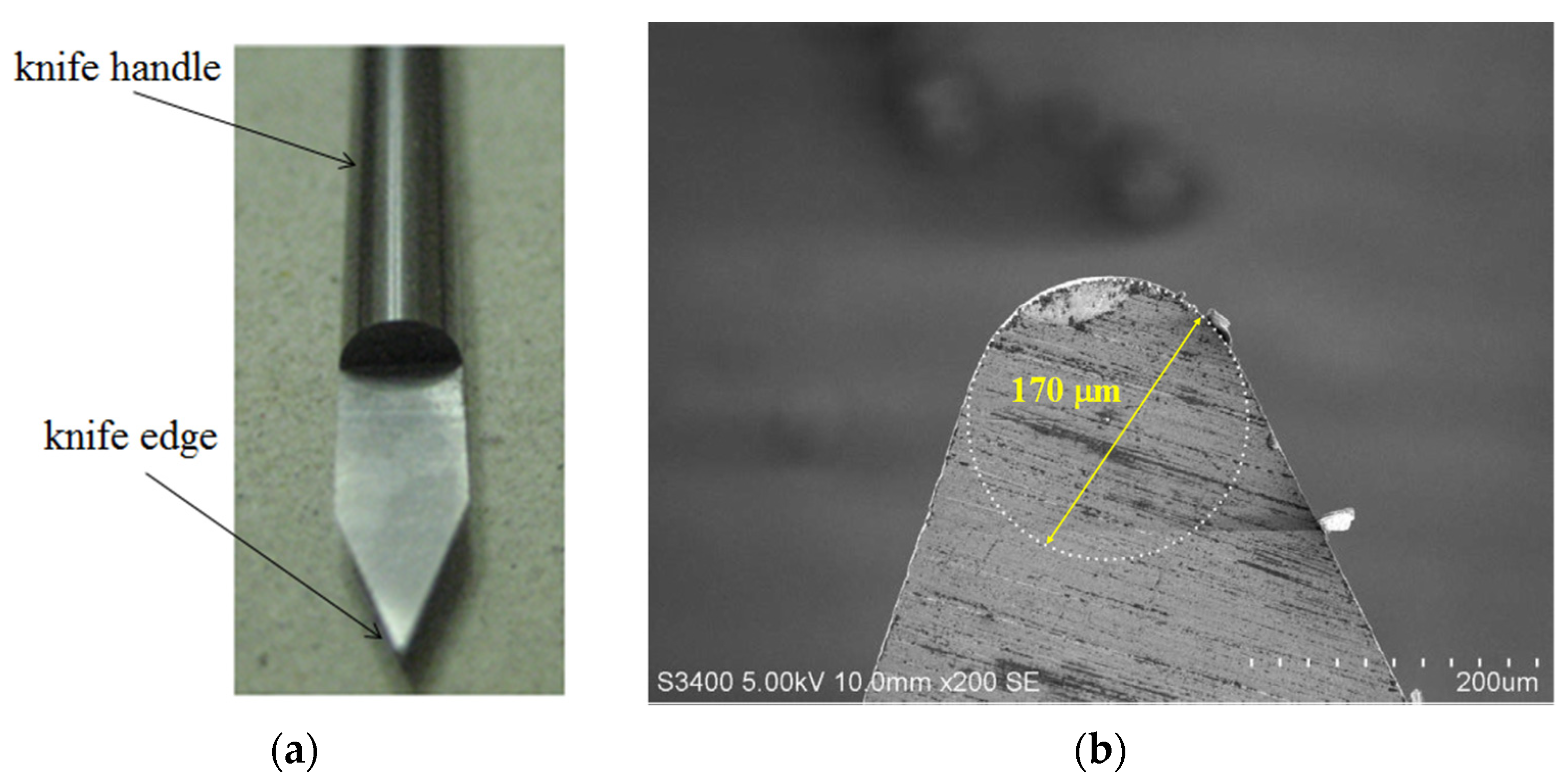
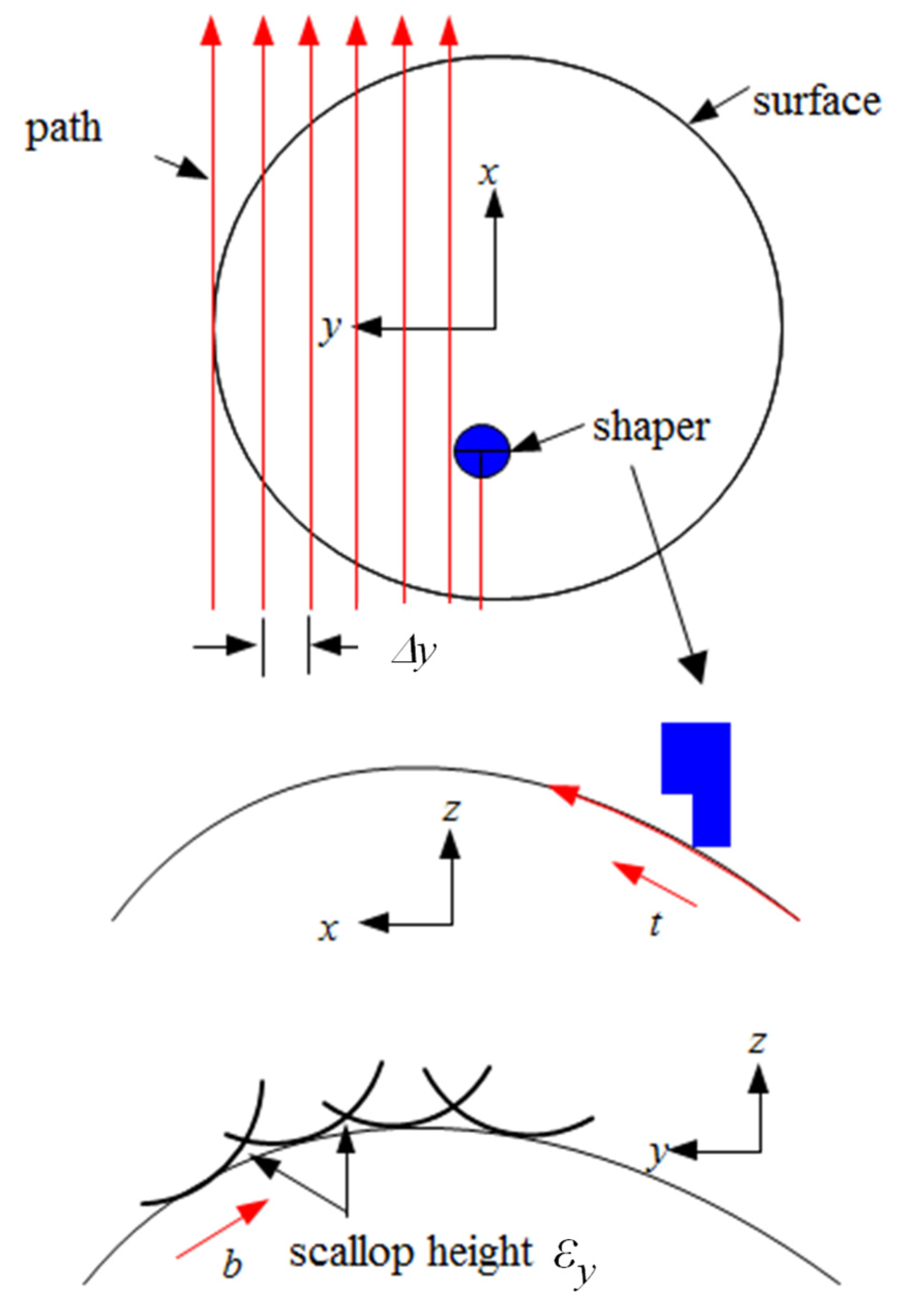
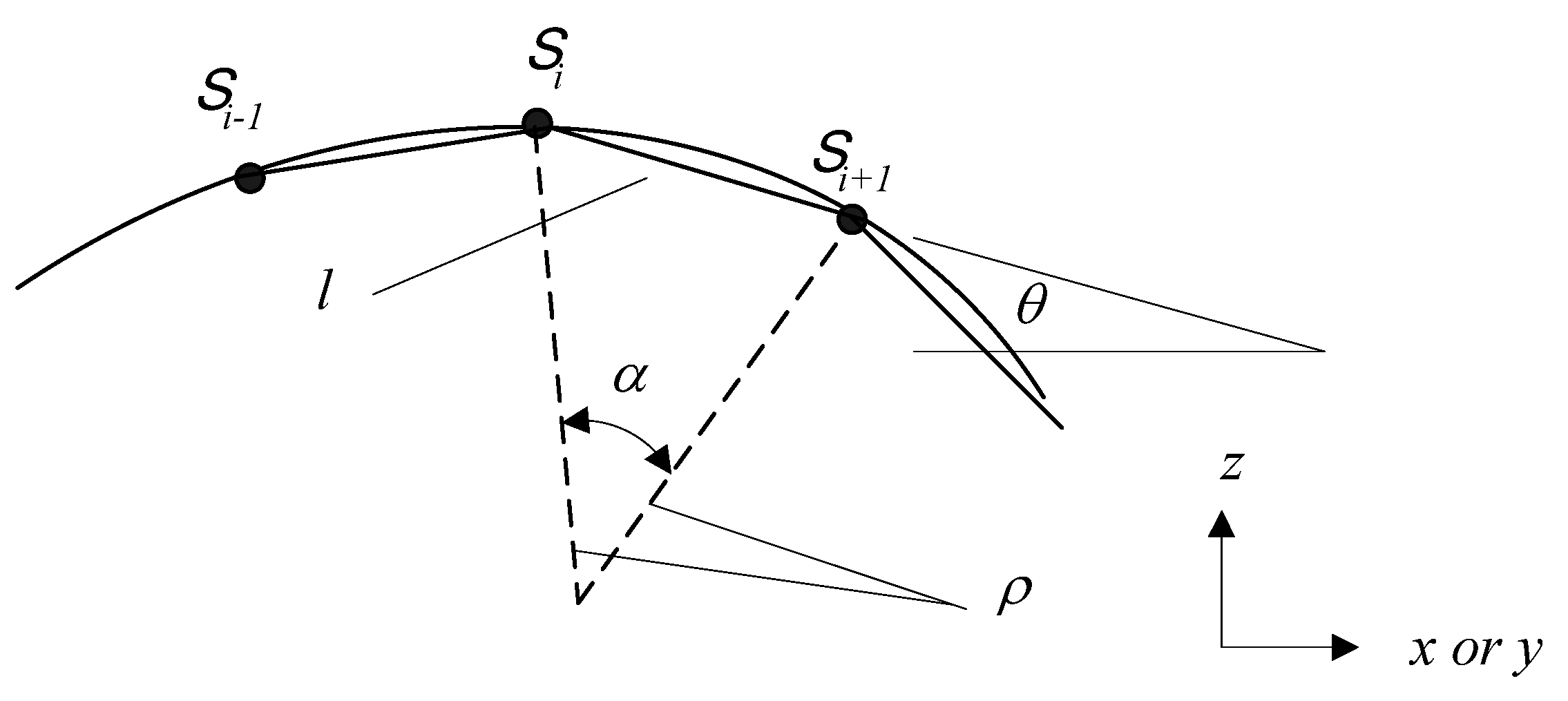
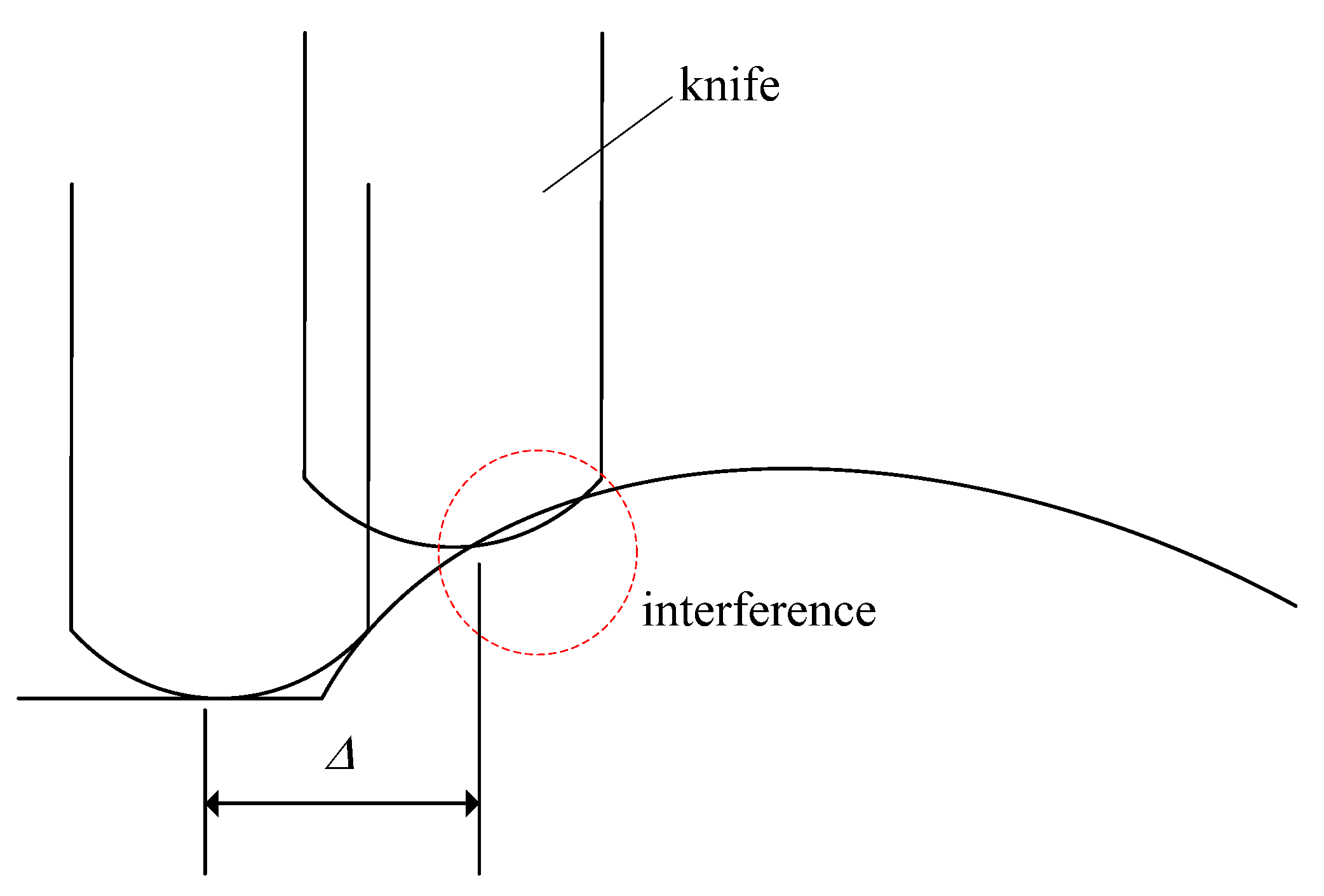
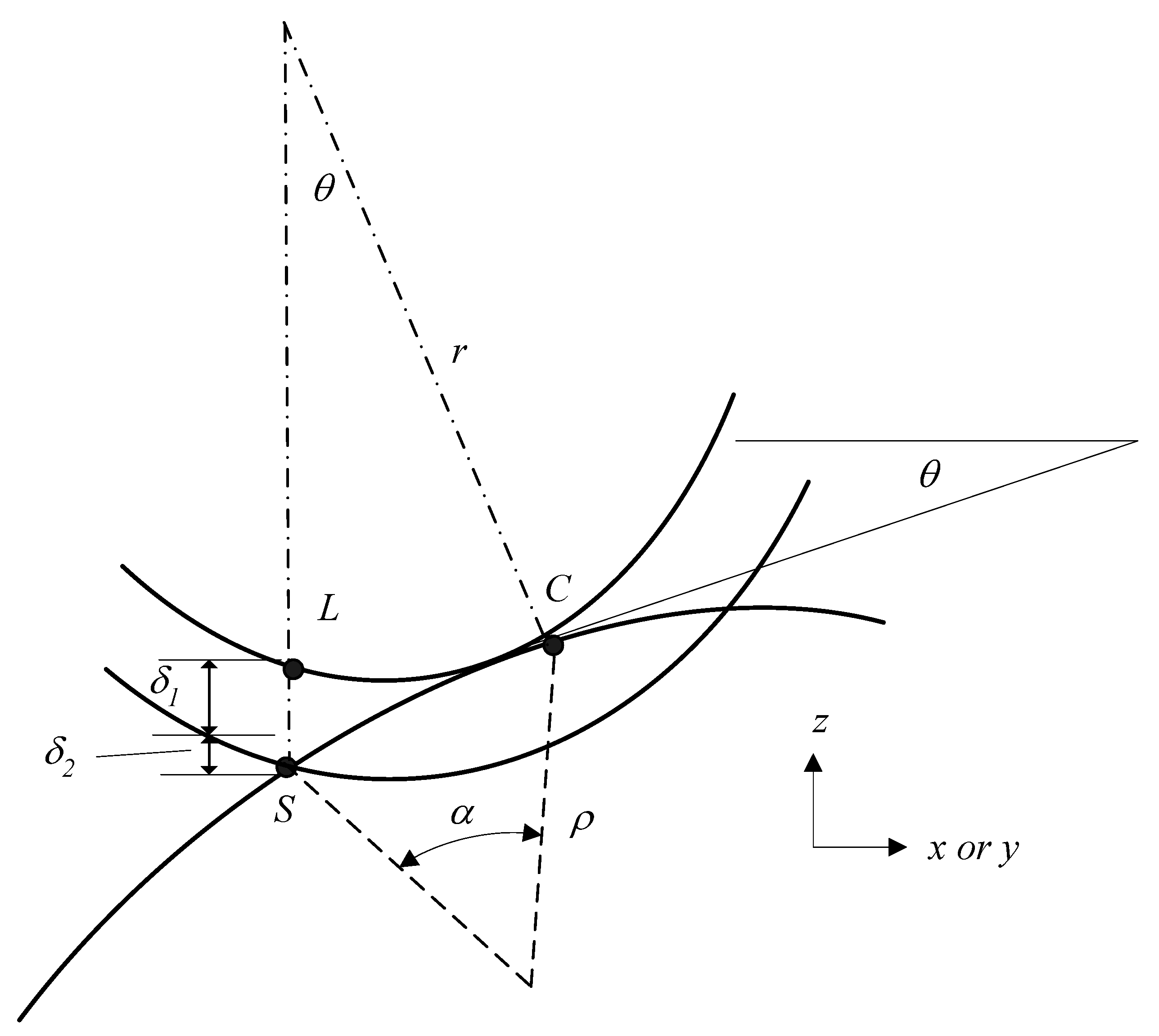
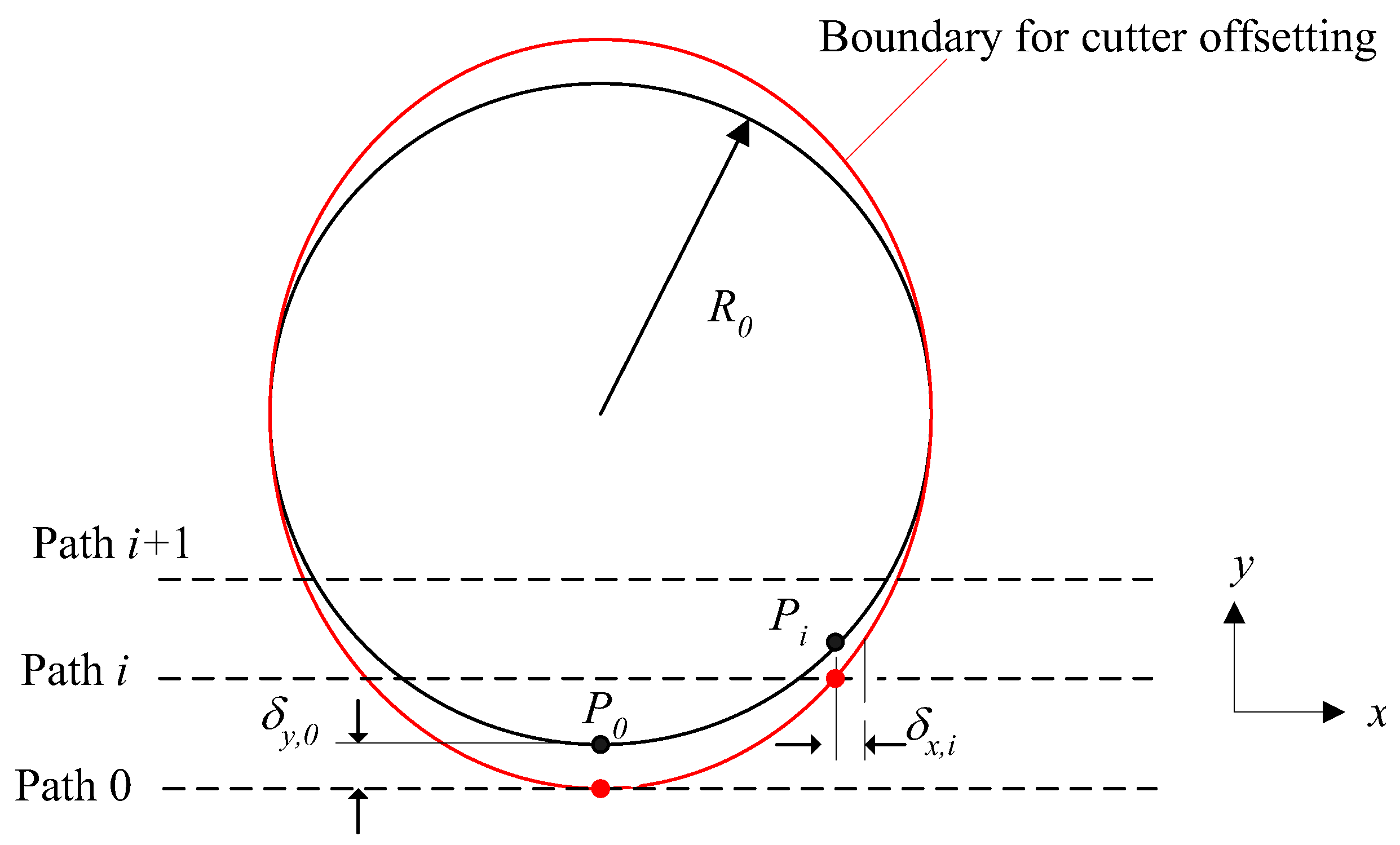

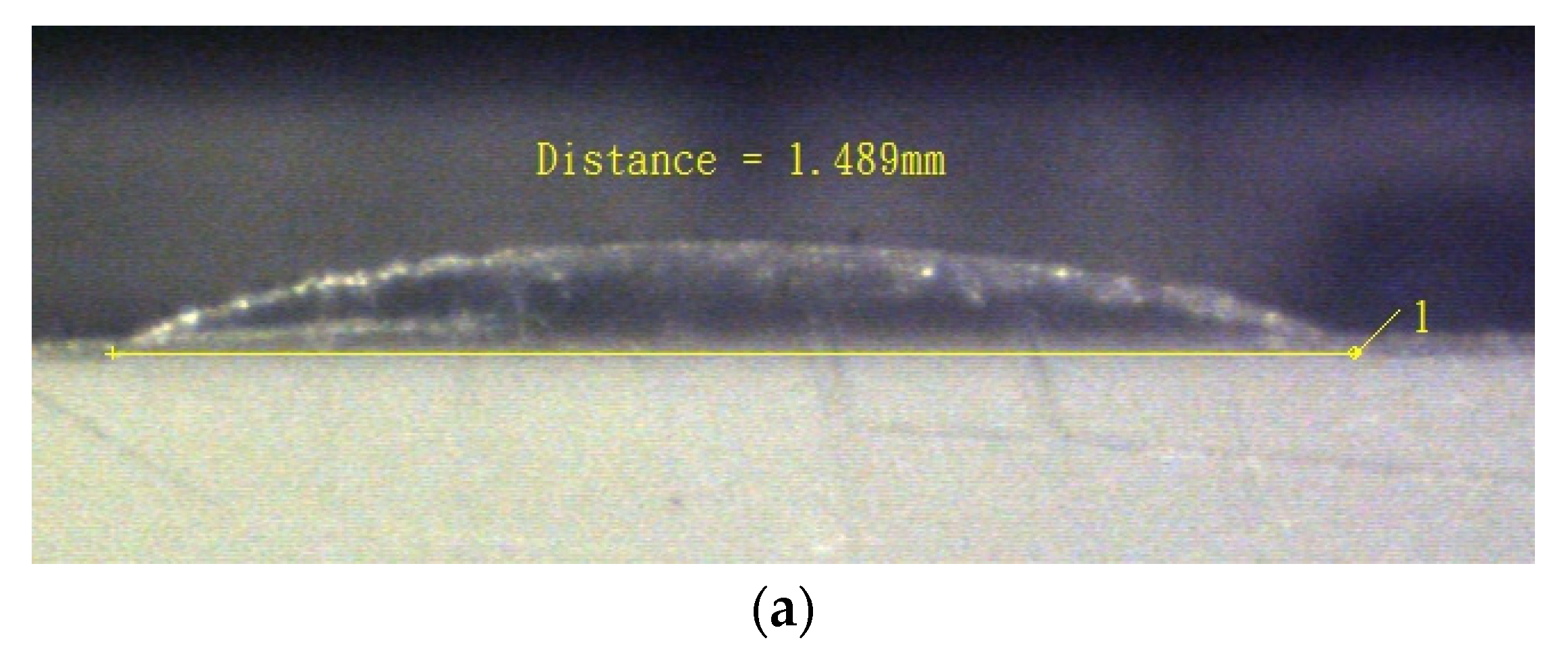
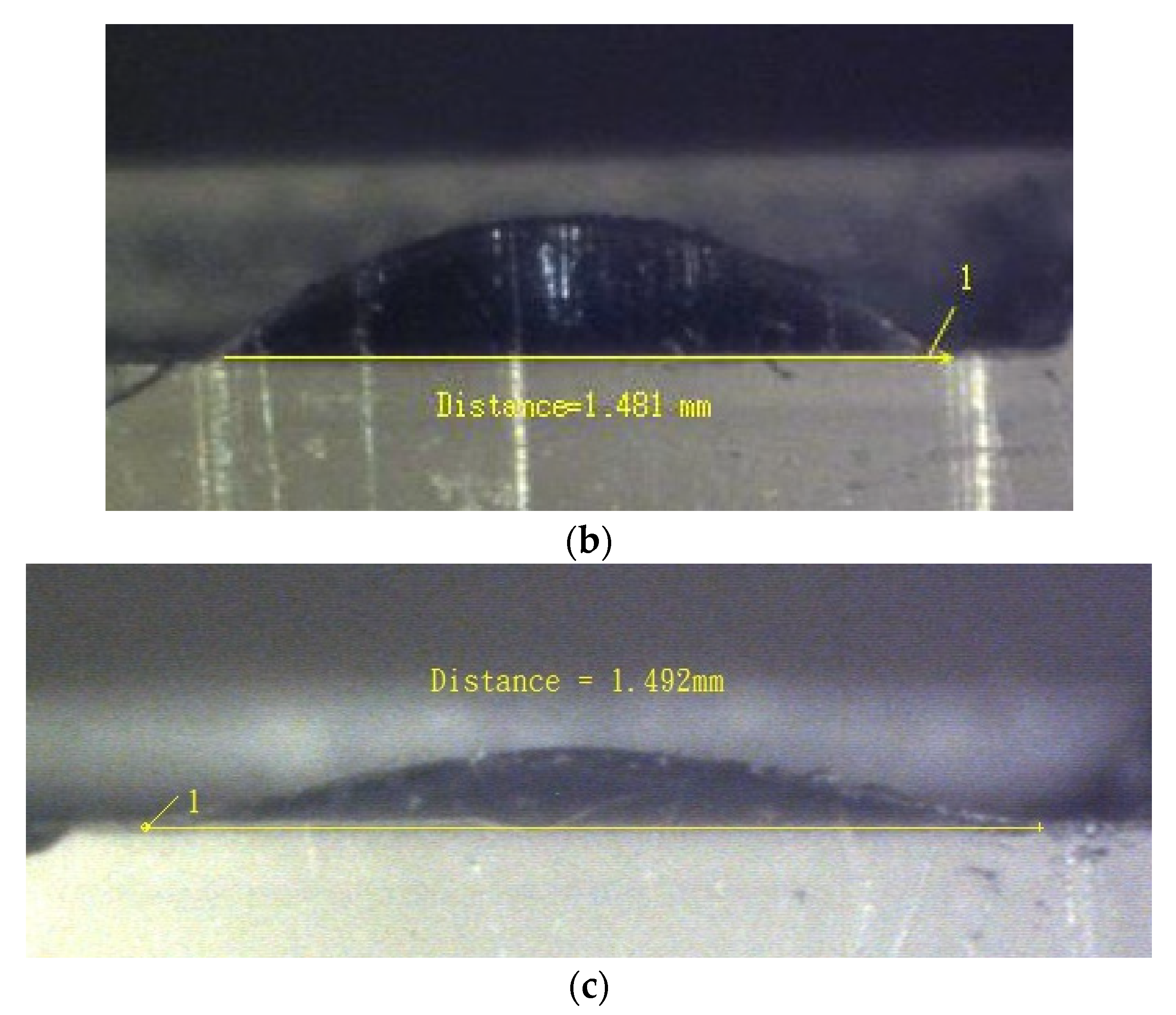


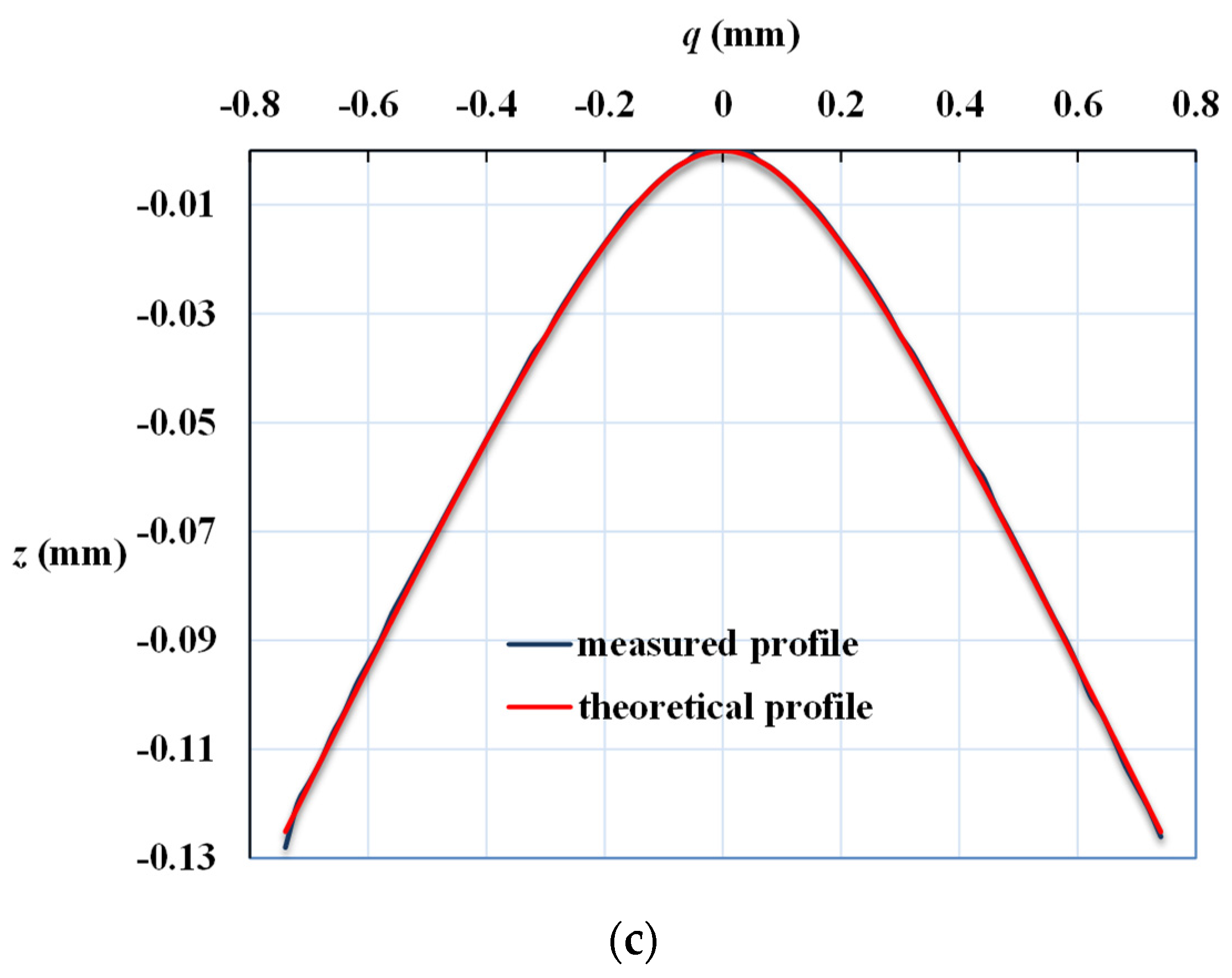
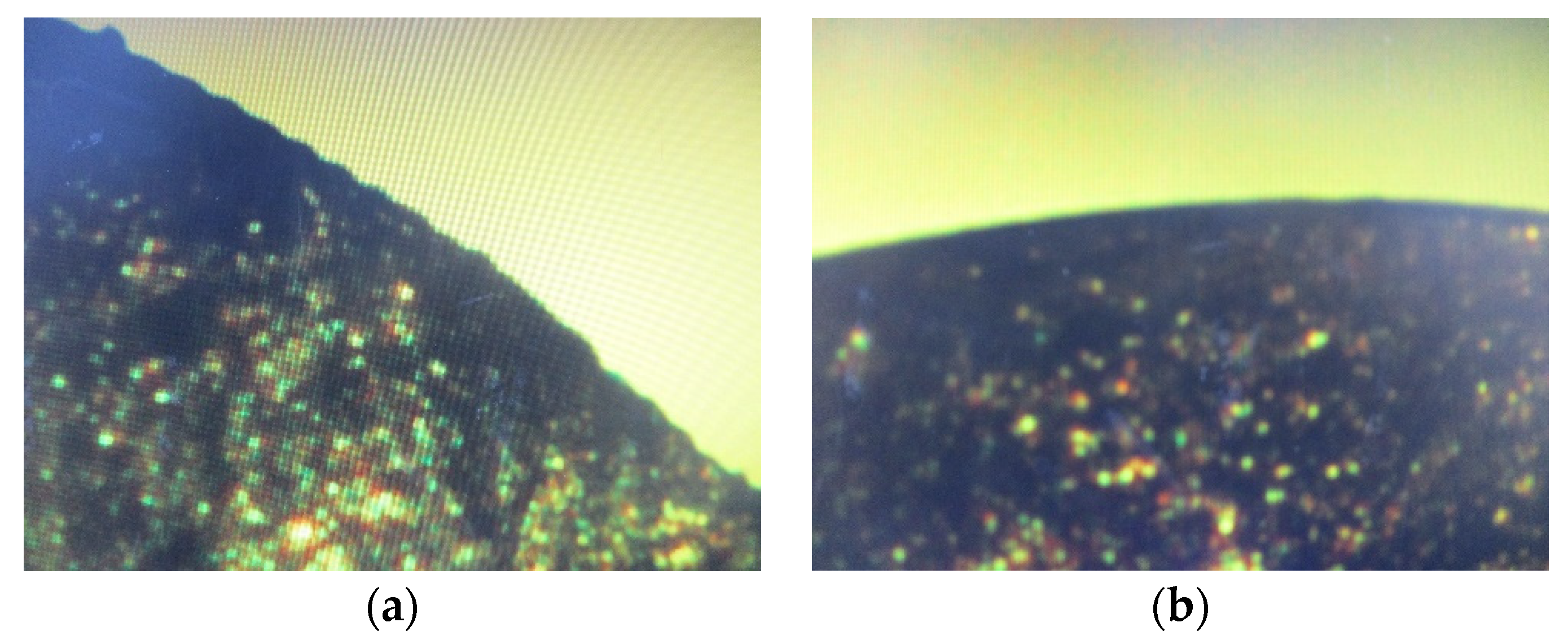
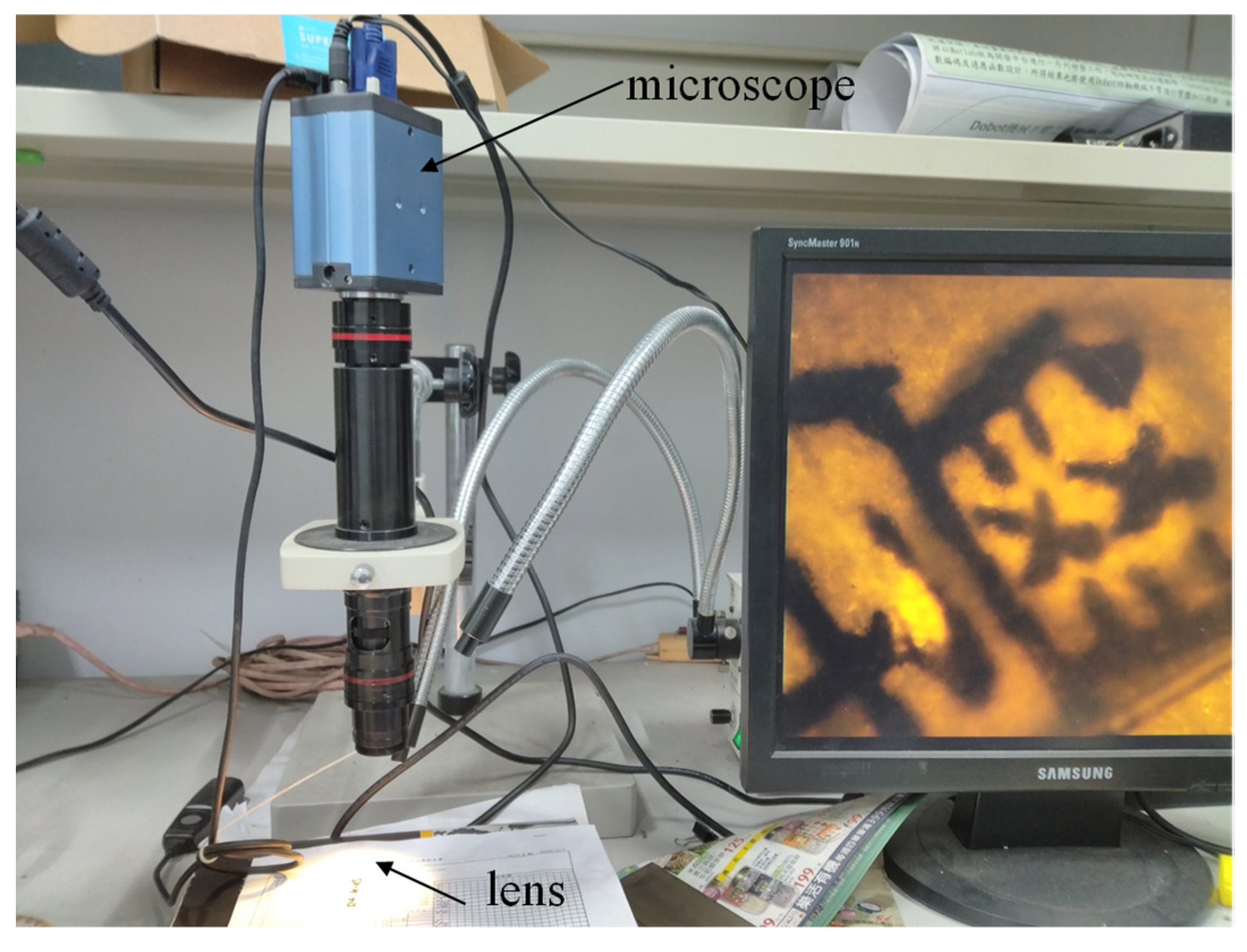

Publisher’s Note: MDPI stays neutral with regard to jurisdictional claims in published maps and institutional affiliations. |
© 2022 by the author. Licensee MDPI, Basel, Switzerland. This article is an open access article distributed under the terms and conditions of the Creative Commons Attribution (CC BY) license (https://creativecommons.org/licenses/by/4.0/).
Share and Cite
Lin, M.-J. Micro Aspheric Convex Lenses Fabricated by Precise Scraping. Micromachines 2022, 13, 778. https://doi.org/10.3390/mi13050778
Lin M-J. Micro Aspheric Convex Lenses Fabricated by Precise Scraping. Micromachines. 2022; 13(5):778. https://doi.org/10.3390/mi13050778
Chicago/Turabian StyleLin, Meng-Ju. 2022. "Micro Aspheric Convex Lenses Fabricated by Precise Scraping" Micromachines 13, no. 5: 778. https://doi.org/10.3390/mi13050778
APA StyleLin, M.-J. (2022). Micro Aspheric Convex Lenses Fabricated by Precise Scraping. Micromachines, 13(5), 778. https://doi.org/10.3390/mi13050778





